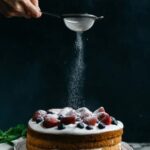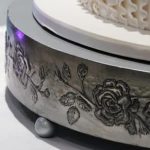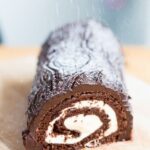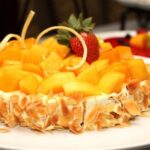Fondant decorations have gained immense popularity in the realm of cake decorating for their ability to add a touch of elegance, detail, and creativity. When combined with buttercream, the possibilities are endless in terms of design and aesthetic appeal. Whether you’re a novice baker or an experienced cake decorator seeking to elevate your skills, this article aims to provide a comprehensive step-by-step guide on adding fondant decorations to a buttercream cake.
The versatility of fondant decorations allows for endless creativity when it comes to cake design. From intricate cut-outs and personalized figures or toppers to beautifully sculpted pleats or ruffles, each technique adds its own unique charm. By mastering the art of combining fondant and buttercream, you’ll be able to create visually stunning cakes that are sure to impress.
The purpose of this blog post is to guide you through the process of incorporating fondant decorations onto a buttercream cake. Each section will focus on specific techniques such as adding fondant cut-outs, creating figures or toppers, sculpting ruffles or pleats, painting or coloring fondant decorations, as well as assembling and storing the final masterpiece.
With clear instructions and helpful tips along the way, you’ll gain the knowledge and confidence needed to create your own show-stopping fondant-buttercream cakes.
So get ready to unlock your artistic side and explore the exciting world of combining fondant with buttercream. Whether it’s for a special occasion or simply an opportunity to showcase your creativity, adding fondant decorations will undoubtedly take your cake decorating skills to new heights. Let’s dive in.
Understanding the Basics of Buttercream Cakes
Buttercream is a popular and versatile frosting that is commonly used on cakes. In this section, we will delve into the basics of buttercream cakes, including different types of buttercream and tips for achieving a smooth base for fondant application.
What is Buttercream?
Buttercream is a type of icing made from butter, sugar, and flavorings such as vanilla or chocolate. It has a creamy texture and can be easily piped or spread onto cakes. The sweetness and richness of buttercream make it a favorite among cake decorators.
Different Types of Buttercream
There are several types of buttercream, including Swiss, Italian, and American buttercream. Swiss meringue buttercream is made by heating egg whites and sugar together before beating in softened butter. This results in a silky and stable frosting that works well for adding fondant decorations. Italian meringue buttercream follows a similar process but involves pouring hot sugar syrup into whipped egg whites for added stability.
American buttercream is the simplest type, made by creaming together softened butter and powdered sugar. While it may not have the same stability as Swiss or Italian meringue buttercreams, it can still be used as a base for fondant decorations with proper techniques.
Achieving a Smooth Buttercream Base
To prepare your cake for fondant decorations, it’s crucial to achieve a smooth surface with your buttercream frosting. Start by applying a crumb coat – a thin layer of frosting that seals in any loose crumbs on the cake’s surface. Allow the crumb coat to set before adding more layers of frosting.
Once you have multiple layers of frosting on your cake, use an offset spatula or bench scraper to smooth out the surface. Hold the spatula at an angle against the cake while turning the turntable to create an even finish. Take your time and apply gentle pressure to ensure a smooth, flat surface that is ready for fondant decorations.
Preparing and Rolling Fondant
Fondant is a versatile medium in cake decorating that offers endless creative possibilities. It provides a smooth, polished look to cakes, and when combined with buttercream frosting, it creates a beautiful and professional finish. In this section, we will guide you through the process of preparing and rolling fondant for your buttercream cake.
Understanding the Purpose of Fondant
Fondant is a pliable icing made from sugar, water, and gelatin or agar. It offers several advantages over other mediums, such as its ability to create smooth surfaces and intricate designs. Fondant also acts as a protective layer for the cake, keeping it moist and fresh for longer periods.
When preparing fondant for your buttercream cake, always start with clean hands and work surface. Cleanliness is crucial as any debris or dust can impact the appearance of the finished product. Dust your work surface lightly with powdered sugar or cornstarch to prevent sticking.
Choosing the Right Fondant Type
There are various types of fondant available in the market, including rolled fondant or ready-to-use fondant. Rolled fondants require preparation before use but offer more control over thickness and texture. Ready-to-use fondants come already prepared and are ideal for quick decorations.
When selecting a rolled fondant, consider factors such as taste, workability, and flexibility. Some brands offer flavored fondants like vanilla or chocolate that can enhance the overall taste of your cake.
Rolling Fondant
To begin working with your desired type of fondant, knead it until it becomes pliable and easy to work with. This process helps soften any stiff parts in the package while making sure it has an even temperature throughout.
Next, roll out the fondant using a rolling pin on your prepared surface. Start from the center and roll outward in all directions, making sure to maintain an even thickness. Aim for approximately ¼ inch thickness, as this provides optimal coverage and allows for easy handling and manipulation.
To transfer the rolled fondant onto your cake, carefully lift it using a rolling pin or by wrapping it around your forearm. Place it gently on top of the buttercream cake and smooth out any wrinkles or air bubbles using a fondant smoother or your hands.
With your fondant now perfectly prepared and rolled, you are ready to move on to the next step of adding fondant cut-outs or creating intricate fondant decorations for your buttercream cake.
Adding Fondant Cut-Outs
One popular technique for adding fondant decorations to a buttercream cake is using cut-outs. These can be used to create various designs and shapes, such as flowers, shapes, or even letters. To start, roll out the fondant to the desired thickness on a clean and well-dusted surface. It’s important to ensure that the fondant is not too thin or too thick; aim for a thickness of about 1/8 inch for cut-outs.
Once the fondant is rolled out, use different sizes and shapes of cookie cutters or fondant cutters to create the desired shapes. Make sure to press firmly enough to cut through the fondant but avoid wiggling the cutter too much as this can distort the shape. Gently lift each cut-out from the surface using an offset spatula or your fingers.
To apply the fondant cut-outs onto the buttercream cake, carefully place them on top of the cake or wherever desired. To adhere them securely, lightly brush a small amount of water or piping gel onto the back of each cut-out before attaching it to the cake. This will help create a bond between the fondant and buttercream.
To achieve clean edges on your fondant cut-outs, you can use a sharp craft knife or scalpel to trim away any excess fondant around the edges. Take your time and make precise cuts for a professional finish. If desired, you can also add additional details or embellishments like edible pearls or sprinkles using a small amount of edible glue.
By incorporating fondant cut-outs into your buttercream cake design, you can easily add eye-catching shapes and patterns in a variety of colors. Whether you want to create an elegant floral design or personalize with initials or names, fondant cut-outs offer endless possibilities for customization and creativity on your buttercream cake.
Creating Fondant Figures or Toppers
Fondant figures or toppers are a great way to add a personalized touch to your buttercream cake. These edible decorations can be crafted and assembled to match the theme or occasion of your cake, making it truly unique and special. In this section, we will show you how to create fondant figures or toppers step-by-step, providing techniques for working with fondant molds, sculpting details, and achieving stability for larger fondant decorations.
To start, gather all the necessary tools and materials for creating your fondant figures or toppers. This includes fondant in various colors, small rolling pins, carving tools, toothpicks or skewers for support, and edible glue or water for attaching different pieces together.
One technique for creating fondant figures is using molds. These molds come in a variety of shapes and designs that can help you achieve intricate details with ease. Begin by kneading your desired color of fondant until smooth and pliable.
Roll out the fondant on a clean surface dusted with cornstarch or powdered sugar to prevent sticking. Press the fondant into the mold firmly before removing any excess around the edges. Carefully remove the molded piece from the mold and set it aside to dry slightly.
If you prefer a more handcrafted approach, you can sculpt your own fondant figures using carving tools. Start by shaping a base for your figure using a ball of fondant that has been tinted with food coloring if desired. Using smaller pieces of colored fondant, add details such as facial features, clothing, or accessories by attaching them with edible glue or water. For stability, insert toothpicks or skewers into larger parts of the figure as support.
Remember to let your fondant figures dry completely before adding them to your buttercream cake. This will ensure that they hold their shape and maintain their stability when placed on the cake’s surface. Once dry, carefully place your fondant figures or toppers onto the cake, using a small amount of buttercream icing or edible glue to secure them if necessary.
| Fondant Figures Ideas | Recommended Theme/Celebration |
|---|---|
| Animal characters (e.g., giraffe, lion, elephant) | Jungle-themed birthday party |
| Superhero figures (e.g., Batman, Wonder Woman) | Superhero-themed cake for a fan |
| Baby figurines (e.g., baby block, teddy bear) | Baby shower or christening celebration |
| Graduation cap and diploma | Graduation party |
Let your imagination run wild when creating fondant figures or toppers for your buttercream cake. With practice and patience, you’ll soon become skilled at bringing your ideas to life with fondant. Whether it’s a cute animal character or a detailed replica of something special, these personalized decorations will elevate any buttercream cake to the next level.
Incorporating Fondant Ruffles or Pleats
To add a touch of elegance and texture to your buttercream cake, incorporating fondant ruffles or pleats is the way to go. Fondant ruffles and pleats can create a beautiful and sophisticated look that takes your cake decorating skills to the next level. In this section, we will guide you through the process of creating these decorative details.
Creating Fondant Ruffles
There are several techniques you can use to sculpt fondant ruffles onto your buttercream cake. One method is hand-pleating, where you gently fold the fondant strip back and forth to create small, even pleats. Another option is using specialized tools such as ruffle cutters or frill mats, which help you achieve more intricate designs and uniform ruffles. Experiment with different techniques to find the one that suits your desired aesthetic.
When applying the ruffles to your buttercream cake, start from the bottom and work your way up in layers. Apply a thin layer of buttercream under each row of ruffles for better adhesion. Gently press each ruffle onto the cake, ensuring they overlap slightly for a seamless appearance. Continue adding rows until you achieve your desired look.
Incorporating Fondant Pleats
Similar to fondant ruffles, there are various methods for incorporating pleats into your buttercream cake design. Hand-pleating is one option where you fold the fondant strip in accordion-like folds before attaching it to the cake. Alternatively, you can also use specialized tools such as pleat or flounce cutters for a more defined and uniform pleat pattern.
When arranging fondant pleats on your cake, consider incorporating them vertically or horizontally depending on the overall design or theme of your cake. You can choose to cover an entire tier with pleated fondant or create accent bands around certain sections of the cake. Use a small amount of buttercream or edible glue to secure the pleats to the buttercream cake, ensuring they adhere properly. Trim any excess fondant for a neat and polished look.
Whether you opt for ruffles or pleats, these fondant decorations add dimension, texture, and visual interest to your buttercream cake. Experiment with different sizes, shapes, and colors of fondant strips to create various effects. Remember that practice makes perfect when working with fondant ruffles and pleats. So don’t be afraid to try out different techniques until you find the one that suits your style and brings your vision to life.
Painting or Coloring Fondant Decorations
One of the most exciting aspects of working with fondant decorations on a buttercream cake is the ability to add color and texture to create unique and eye-catching designs. Painting or coloring fondant allows for endless possibilities in terms of customization and personalization. In this section, we will explore various techniques for adding color to fondant decorations using edible paints, dusts, or gel pastes.
When it comes to painting or coloring fondant, it is important to use food-safe ingredients that are specifically designed for this purpose. Edible paints, which are available in a wide range of colors and finishes, can be applied directly onto the fondant with a small brush.
Dusts, on the other hand, are dry powders that can be mixed with a solvent such as vodka or clear extract to create a paint-like consistency. These can then be brushed onto the fondant surface to achieve different effects such as shimmering metallics or soft matte finishes.
Gel pastes are another popular option for coloring fondant decorations. These highly concentrated pigments come in a variety of colors and intensities and can be mixed into white fondant to achieve custom shades. To blend colors within a design or create gradients, simply blend different gel paste colors together before applying them to the fondant. It is important to note that gel pastes can stain surfaces easily, so it’s best practice to wear gloves during the coloring process.
Regardless of the method chosen for coloring your fondant decorations, it is essential to allow them ample time to dry completely before applying them onto your buttercream cake. This will prevent any smudging or bleeding of the colors onto the cake frosting. Once dried and ready, gently transfer your beautifully painted and colored fondant decorations onto your cake using appropriate tools such as spatulas or toothpicks.
By utilizing painting or coloring techniques on your fondant decorations, you have the ability to elevate your buttercream cake to a whole new level of artistry and creativity. So don’t be afraid to experiment with different colors, textures, and finishes to create beautiful, personalized designs that will wow guests and make any occasion extra special.
Assembling and Storing the Decorated Cake
Safely Transferring Fondant Decorations
Before assembling the cake, it’s important to know how to transfer fondant decorations onto the buttercream cake without damaging them. Follow these steps for a seamless application:
- Prepare the cake: Ensure that your buttercream base is smooth and chilled. This will provide a stable surface for attaching the fondant decorations.
- Plan the placement: Decide where you want each fondant decoration to go before attaching them. Use a toothpick or skewer to lightly mark the spots on the buttercream where you want each element to be placed.
- Adhere with water or edible glue: Apply a small amount of water or edible glue to the back of each fondant decoration using a food-safe brush or sponge brush. This will help bond the decorations to the buttercream. Be careful not to use too much liquid, as it can cause the fondant to dissolve or become too sticky.
- Gently press in place: Carefully place each decoration onto the marked spots on the buttercream and gently press down until they adhere securely. Smooth out any air bubbles by lightly pressing on the surface of each decoration.
Best Practices for Storing Fondant-Decorated Cakes
After assembling your beautifully adorned cake, it’s essential to follow proper storage practices to maintain its freshness and appearance:
- Keep in a cool, dry place: Store your finished cake in a cool, dry area away from direct sunlight, humidity, and heat sources. These factors can cause your decorations to melt or lose their shape.
- Cover and protect: Use a cake dome or cover with plastic wrap to protect your cake from dust or contaminants while also preventing it from drying out.
- Refrigerate if necessary: If your cake has perishable fillings such as fresh fruit or cream, refrigeration may be necessary for food safety reasons. However, note that refrigeration can cause condensation on the fondant surface, potentially affecting its appearance. If refrigerating, do not place the cake next to strong-smelling foods as it may absorb unwanted odors.
- Short-term storage: If you need to store your cake for a short duration (less than 24 hours), it should be fine at room temperature. Ensure that the environment is cool and dry to prevent any melting or sagging of the decorations.
Following these steps will help ensure that your fondant-decorated buttercream cake remains visually stunning and delicious for as long as possible. Remember to exercise caution when moving or transporting your finished creation to avoid any damage to the delicate fondant decorations. With proper assembly and storage, your cake is sure to impress and delight all who see and taste it.
Conclusion
In conclusion, adding fondant decorations to a buttercream cake is a wonderful way to elevate its aesthetic appeal and showcase your creativity. Throughout this article, we have explored the various techniques and steps involved in incorporating fondant onto a buttercream cake. From understanding the basics of buttercream cakes to creating fondant figures or toppers, each section has provided valuable insights and tips for achieving impressive results.
By following the step-by-step guide provided in this article, readers can confidently experiment with different designs and techniques to bring their cake decorating visions to life. Whether it’s adding fondant cut-outs, incorporating ruffles or pleats, or painting and coloring fondant decorations, there are endless possibilities for creating show-stopping designs.
As you embark on your own fondant-buttercream cake creations, remember to have fun and allow your creativity to flourish. Don’t be afraid to try new things and push the boundaries of what you think is possible. With practice and patience, you will soon become adept at creating beautiful and visually stunning cakes that leave a lasting impression.
In closing, always remember that the key to a successful fondant-buttercream cake lies in careful preparation, attention to detail, and an unwavering passion for the craft. So go ahead and let your imagination run wild as you embark on an exciting journey of creating personalized masterpieces that will delight both the eye and the taste buds.
Frequently Asked Questions
Can I put fondant decorations on buttercream cake?
Yes, it is possible to put fondant decorations on a buttercream cake. However, there are a few things to consider when doing so. Firstly, it is important to make sure that the buttercream has properly set and crusted before applying the fondant.
This helps ensure that the fondant shapes adhere well and don’t slide or sag on the cake’s surface. Additionally, it may be helpful to lightly brush the buttercream with a thin layer of water or edible glue before placing the fondant decorations, as this can enhance their adherence.
Will fondant shapes stick to buttercream?
Fondant shapes can stick to a buttercream cake, but there are a couple of factors that could impact their ability to do so effectively. The texture and consistency of the buttercream can play a role in how well the fondant adheres. If the buttercream is too soft or moist, it may not provide enough grip for the fondant shapes to stay in place securely.
In such cases, it may help to chill the cake slightly before applying the fondant decorations, as this can firm up the buttercream and improve its adhesive properties. Additionally, using a thin layer of water or edible glue on the back of each fondant shape can also assist in ensuring they stick firmly onto the cake.
How far in advance can I put fondant decorations on a buttercream cake?
The timing for putting fondant decorations on a buttercream cake will depend on several factors, including humidity levels and specific recipe details. As a general guideline, it is recommended to add fondant decorations to a buttercream cake no more than 24-48 hours before serving or displaying. Applying them too far in advance could result in unwanted changes in texture or appearance due to exposure to moisture from both filling/frostings and ambient air conditions.
It is best practice to store cakes with fondant decorations at room temperature in a cool and dry environment until ready for use while avoiding refrigeration as it may cause condensation upon removal which affects appearance negatively. Always consider the specific stability and freshness of the buttercream, fillings, and cake layers when deciding on the timing for adding fondant decorations.

Welcome to my blog about home and family. This blog is a place where I will share my thoughts, ideas, and experiences related to these important topics. I am a stay-at-home mom with two young children. I hope you enjoy reading it! and may find some helpful tips and ideas that will make your home and family life even better!





